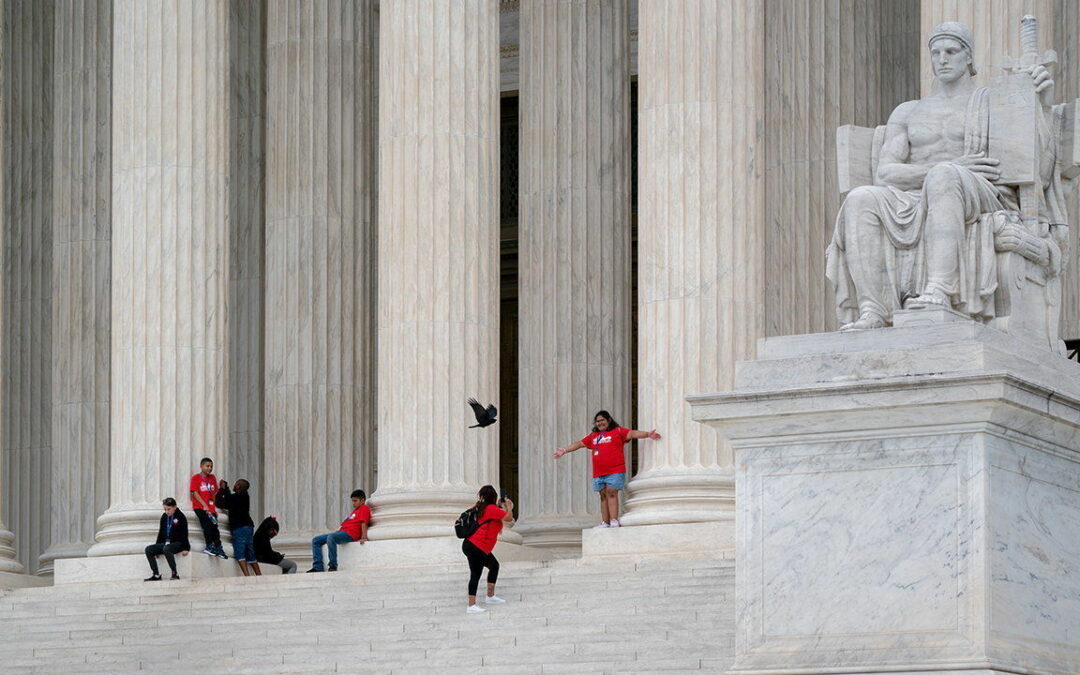FREEDOM OF EXPRESSION, America’s Supreme Court wrote in 1937, is “the matrix, the indispensable condition of nearly every other form of freedom”. Very few types of speech fall outside that sanctuary. Only language that is obscene, false or misleading in a commercial context, or that defames or directly incites or provokes violence is unprotected by the wide umbrella of the First Amendment’s free-speech guarantee. The Supreme Court has over decades gradually clarified the boundaries of these categories. But it has never offered a precise account of how to determine when threatening expression crosses the line from protected to proscribable. A large unresolved issue involves intent: Is a statement a “true threat” only if the speaker intends it to be a threat? Or can a statement count as a threat in the eyes of a reasonable listener even if the speaker never intended it that way?
The issue comes before the nine justices on April 19th in Counterman v Colorado. The case asks whether Billy Raymond Counterman’s slew of strange and off-putting messages to Coles Whalen, a singer in Denver, are protected speech. If Mr Counterman prevails, his four-and-a-half-year prison sentence for violating Colorado’s anti-stalking law will be reversed. But the ruling, expected by the end of June, will also have broader implications everywhere in America on the scope of the government’s authority to protect individuals from harassment and other harms.
As litigants go, Mr Counterman is not particularly sympathetic. Colorado’s brief to the justices recounts the “years of unwanted messages” he sent the musician on Facebook. Some missives she found “distressing” (“I am going to the store would you like anything?”) Others were more ominous (“Was that you in the white Jeep?”, “I’ve had tapped phone lines before. What do you fear?”). And a few were aggressive: “Fuck off permanently”,“Die, don’t need you.” The recipient did not respond to these messages and repeatedly blocked Mr Counterman, but his barrage continued from new accounts, under different names. The effect on Ms Whalen was profound: “her anxiety spiked, she had trouble sleeping and she constantly looked over her shoulder”. She also cancelled some of her shows.
But Mr Counterman’s lawyer, John Elwood, says the messages were “at most, heated but non-threatening”. He acknowledged that they harmed the musician’s life and livelihood, but argues that his client’s mental illness made him unaware of coming across as menacing. The conviction, Mr Elwood argues, is therefore “constitutionally invalid”: America’s judiciary has always required solid proof that a speaker intended his expression as a threat for criminal prosecution. He points to an example: in People v Croswell, a case from 1804, the Supreme Court upheld a man’s conviction for criticising Thomas Jefferson in an article. But the lead opinion insisted that “[t]here can be no crime without an evil mind”.
Civil-liberties organisations—including the American Civil Liberties Union (ACLU), the Cato Institute and the Foundation for Individual Rights and Expression (FIRE)—have rallied in support of Mr Counterman and filed friend-of-the-court briefs on his side. The ACLU worries that anti-stalking laws like Colorado’s could unfairly punish speech just because it is “crudely or zealously expressed” and lead to self-censorship. FIRE cites a University of Utah student who was arrested by university law enforcement officials and subjected to a disciplinary inquiry for her hyperbolic statement that she’d “detonat[e] the nuclear reactor on campus” if the football team lost its upcoming game.
But some prominent scholars take the side of Colorado. One brief, co-authored by Erwin Chemerinsky, dean of the law school at the University of California at Berkeley, says that the First Amendment does not protect the right to “engage in a prolonged, objectively terrorising campaign of stalking against another person”. He argues that people like Mr Counterman who are oblivious to the harm they cause are “more, not less, dangerous”. Mr Chemerinsky endorses the state of Colorado’s approach of considering the context of a statement to determine whether an objective observer would see it as jokey venting (like the student’s nuclear-reactor comment) or a serious threat to do harm.
The Supreme Court has at best rough guidance from its precedents. In 1969, in United States v Watts, the court ruled that a protester who said “the first man I want to get in my sights is L.B.J.” was delivering a political hyperbole, not a “true threat” to President Lyndon Baynes Johnson. In the most recent case in 2015 the court declined to clarify what sort of intent characterises such a threat in Elonis v United States, another case featuring a man using Facebook to say nasty things. It seems there will be no ducking the question in Counterman. ■









